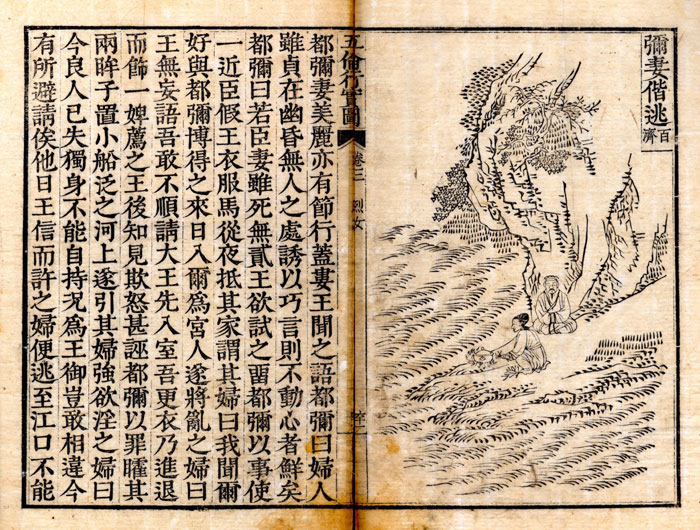
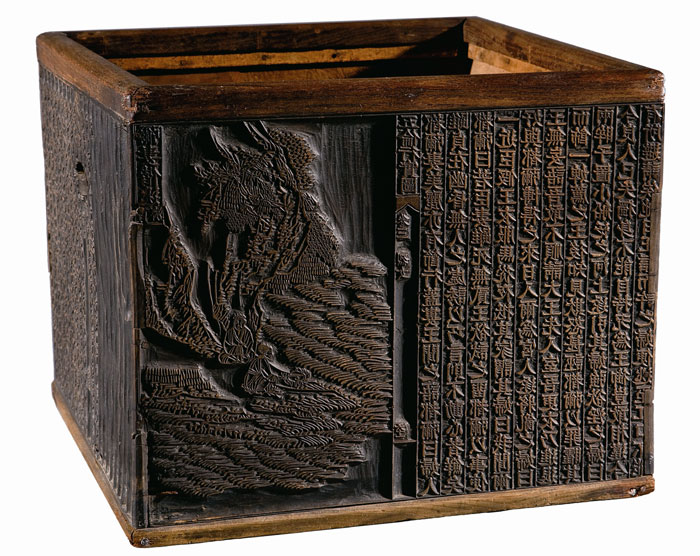
A copy of 'The Five Moral Rules, With Illustrations' (top) and its woodblock (bottom).
A book from the late 18th century tells the story of a woman known to be the wife of a farmer named Domi during the Baekje Kingdom (18 B.C. - A.D. 660). Though pursued by King Gaero (r. 455-475), she did not give in and remained faithful to her spouse. This is part of “The Five Moral Rules, With Illustrations” (오륜행실도, 五倫行實圖), a collection of stories about devoted sons, patriotic servants to the king and chaste women. The book emphasizes the virtues of Confucianism, such as loyalty to the country and filial piety. It was published in 1797 in order to enlighten the entire nation, under the orders of King Jeongjo (r. 1776-1800) of Joseon.
The book can now be seen first-hand at a special exhibition at the National Folk Museum. “The Flowering of Print Culture: Ancient Woodblock Printing” opened on June 3. The exhibit highlights about 100 works of art owned by the Woodblock Prints Museum in Wonji-si City, Gangwon-do (Gangwon Province). Visitors can learn more about the history of woodblock works of art and their various usages, many of them baring characteristics of both printed works and painted works.
One of the exhibit's main artifacts is the “Illustration of the Veteran on the Pavilion in the Forest in Summer” (하일제노장임정도, 夏日題老將林亭圖), a woodblock painting created during the reign of the Qianlong Emperor (r. 1735-1796) in Qing Dynasty China. This over-sized work of art depicts a Chinese city in the 18th century. The museum staff said, “This work is unveiled here for the first time. It is based on a poem by well-known poet Zhang Bin (張蠙) of the Tang Dynasty (618-907). It greatly influenced Japan’s ukiyo-e genre of woodblock prints. There are less than 100 copies of it remaining today.” Ukiyo-e woodblock prints and paintings constitute a unique style of Japanese art from the Edo period (1603-1868). It is characterized by its vivid colors, simple structure and clear outlines.
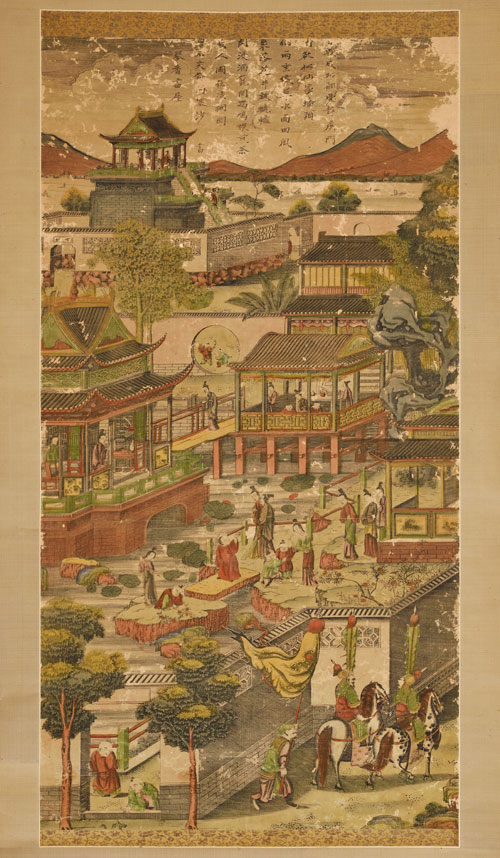
'An Illustration of the Veteran on the Pavilion in the Forest in Summer' was created during the reign of the Qing Dynasty's Qianlong Emperor (r. 1735-1796).
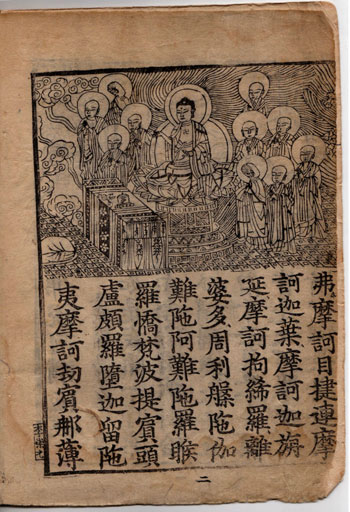
The Amitabha Sutra, as issued by Deokjusa Temple, was printed in 1572 during the reign of Joseon's King Seonjo (r. 1567-1608).
The exhibit also includes woodblock prints that act as printed media. These works include “The Five Moral Rules, With Illustrations” and woodblock paintings of the Amitabha Sutra (덕수자판 불설아미타경, 德周寺版 佛說阿彌陀經) issued by Deokjusa Temple. This sutra praises Buddha's mercy and people recite the prayer in the hope of being reborn in a Buddhist paradise.
Museum visitors can also admire woodblock paintings that reflect the wishes of people who hoped for good luck and to avoid misfortune by owning certain paintings, such as paintings of magpies and tigers in the “Folding Screen With the Illustration of Tigers and Magpies.” These two animals were considered to be symbols of, respectively, good luck and magic. They can also find lucky scripts to avoid the three disasters(삼재 三災).
This is the first exhibit in the National Folk Museum’s “K-Museum Project” series of exhibits. The museum plans to introduce to Seoul works of art owned by either public or private museums in the provinces. The exhibit will run until July 20 and admission is free. The museum is closed every Tuesday. http://www.nfm.go.kr/index.nfm (6개 국어)
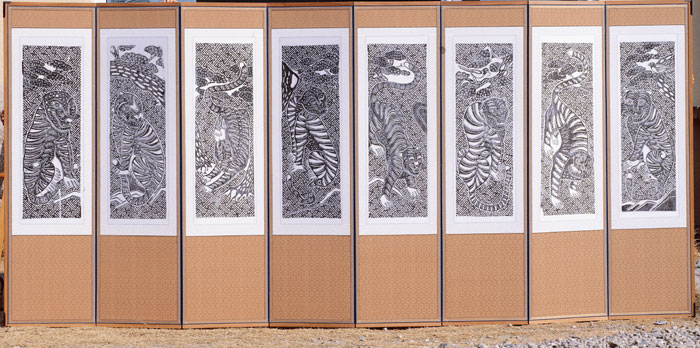
‘Folding Screen With the Illustration of Tigers and Magpies’ was made in the 20th century.
By Yoon Sojung
Korea.net Staff Writer
Photos: National Folk Museum of Korea
arete@korea.kr
Most popular
- Grammy-winning producer calls Suga of BTS 'amazing artist'
- 'Universal love, family' themes fuel success of 'King of Kings': director
- Council sets minimum hourly wage in 2026 at KRW 10,320
- Expansion of foreign app system raises tourist convenience
- Nat'l population diversity rose nearly 8% from 2018-22: study
